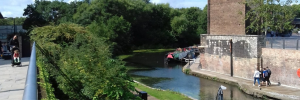Charles Dickens was the quintessential Victorian author. His epic stories, vivid characters and deeply descriptive depiction of contemporary life are unforgettable.
In his second major work, Oliver Twist, he highlights a number of social issues including the abuse and corruption suffered by children. The orphan boy Oliver Twist manages to survive the ordeals the authorities and criminal fraternity throw at him. The scene of Oliver’s plea in the workhouse for more to eat is familiar to countless millions, even to those who have never read the book.
This 90 min walk follows the footsteps of Oliver Twist and the Artful Dodger on their final leg of their journey into London to reach Fagin’s lair. In many of his works, Dickens exploits a spiritual topography; where the notion of neighbourhoods actively influences the lives and characters of the people who live in them. Was it the people who made London a dangerous place or did London have an influence over the people who lived there? It is this spiritual topography we explore further on my Follow the Footsteps of Oliver Twist guided walk.
Victorian London was a dangerous place especially after dark, with highwaymen and other scoundrels waiting to pounce on anyone crossing their path. How did certain areas of London become so neglected? For some areas such as Saffron Hill, the Victorian age became an era of neglect and ran unchecked until redevelopments forced the populous to move away and become the London we know today. Victorian society avoided & ignored much of the underclass. Dickens highlighted social issues, using contrasting areas such as Pentonville and Saffron Hill & then forcing together through his characters such as Mr Brownlow and Nancy. We will delve into literary and physical Pentonville and Saffron Hill, examining Victorian sensibilities.



